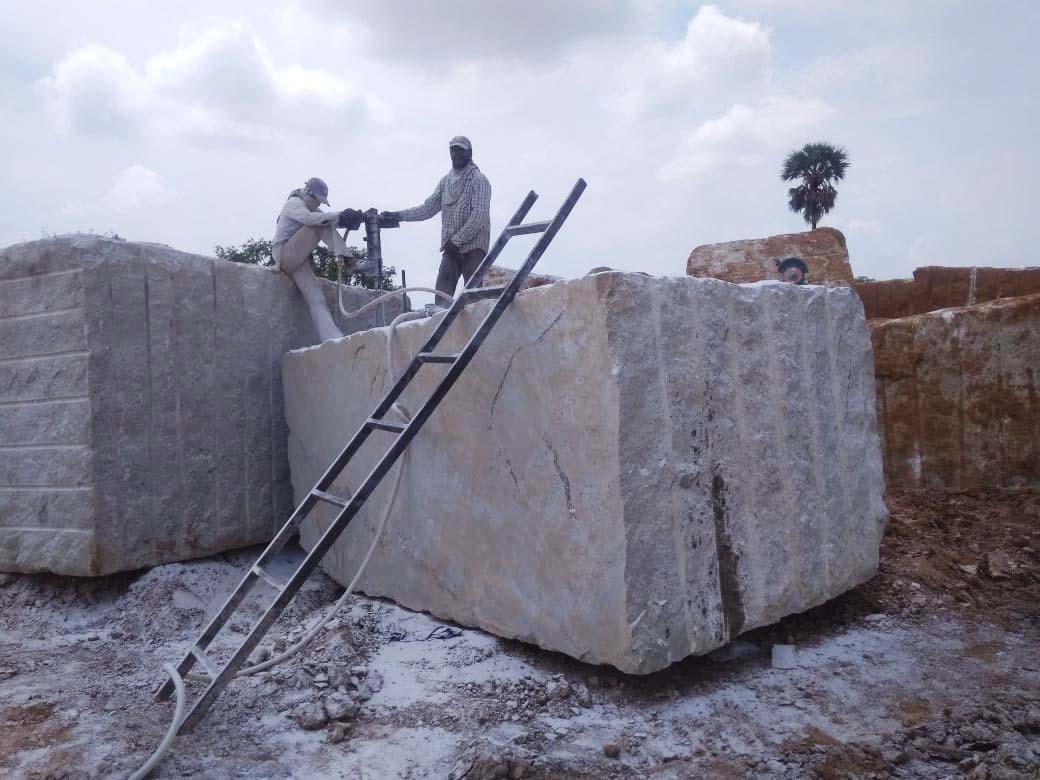Uncovering the Rich Background and Lasting Practices of Granite Quarrying
As we stand on the precipice of revealing the complex tapestry of granite quarrying, a journey with time discloses not just the physical act of drawing out rock yet likewise the cultural and historical significance woven into the extremely material of this technique. From the old beginnings that laid the foundation for modern-day quarrying techniques to the sustainable methods that are forming the future of this industry, each carve mark on granite surface areas narrates waiting to be discovered (granite quarries in south africa). The legacy of granite quarrying stretches far beyond simple removal; it is a testament to human ingenuity, durability, and the long-lasting appeal of this marvelous stone
Old Origins of Granite Quarrying
Going back to old people, the practice of quarrying granite has actually been an integral component of human background and architectural development. The earliest evidence of granite quarrying go back to old Egypt, where huge pyramids and intricate sculptures were crafted from this sturdy rock. The Egyptians used primitive tools to extract granite blocks from quarries, showcasing the value of this product in their huge building and constructions.
Moving on in background, the Greeks likewise made significant contributions to the quarrying of granite. The Greeks utilized granite in numerous architectural marvels, such as temples and statues, showing their ability in shaping and carving this hardy rock. The Romans even more refined the methods of quarrying granite, using sophisticated tools like knives and hammers to extract and shape granite for their iconic frameworks.
Through the centuries, the method of quarrying granite has evolved, with modern-day technologies enhancing performance while keeping the timeless appeal of this natural stone - granite quarries in south africa. From ancient worlds to contemporary home builders, the legacy of granite quarrying proceeds to shape our world
Development of Quarrying Methods
The advancement of quarrying methods has actually been marked by a continual progression towards better effectiveness and precision in removing granite. Early quarrying methods involved manual labor with fundamental devices such as blades, hammers, and wedges to draw out granite blocks from the earth.
Advancements in computer-controlled devices and 3D modeling have maximized quarrying operations, leading to very little environmental impact and boosted sustainability methods. As the need for granite continues to increase, the evolution of quarrying strategies remains integral to conference market needs efficiently and sustainably.
Social Value of Granite
Granite holds an extensive cultural importance across various civilizations because of its long-lasting presence in architectural work of arts and revered monoliths. From the magnificent pyramids of Egypt to the elaborate carvings of the Angkor Wat holy place in Cambodia, granite has been a product of choice for expressing majesty and long life in cultural heritage. In old Rome, granite columns embellished temples and public buildings, representing toughness and permanence. The cultural relevance of granite expands past its physical features; it symbolizes durability, security, and timelessness, making it a sign of enduring traditions and customs.

Lasting Practices in Quarrying
Among the rich history of granite quarrying and its cultural value lies an expanding focus on sustainable practices within the sector. As ecological understanding and problems regarding source deficiency have increased globally, the quarrying field has increasingly embraced sustainable techniques to reduce its impact on the atmosphere and bordering neighborhoods.

Furthermore, improvement and recovery of quarry sites post-extraction are important to sustainable practices. By bring back quarried locations to a natural or useful state, such as creating wild animals environments or entertainment areas, quarriers can counter the ecological impact of their procedures and contribute positively to the neighborhood ecosystem.
Heritage of Granite Quarrying
With a historical background soaked in workmanship and industrial progress, what withstanding impact has granite quarrying left on the landscape of contemporary culture? The legacy of granite quarrying transcends mere extraction techniques; it has formed architectural marvels, metropolitan landscapes, and cultural heritage worldwide. The resilient nature of granite has made it a favored option for monoliths, buildings, and facilities, standing as a testimony to the ability and artistry of quarry workers across generations.
In addition, the economic footprint of granite quarrying can not be ignored. The industry continues to give employment possibility and drive regional economic climates in regions where granite removal is widespread. It has actually also spurred technological developments in quarrying strategies and tools, leading to much more efficient and sustainable practices.
In regards to sustainability, the legacy of granite quarrying includes efforts to reduce environmental impacts through improvement jobs and responsible source management. By balancing economic interests with environmental stewardship, the sector strives to Check Out Your URL make sure that future generations can remain to gain from this long-lasting all-natural source.
Conclusion
